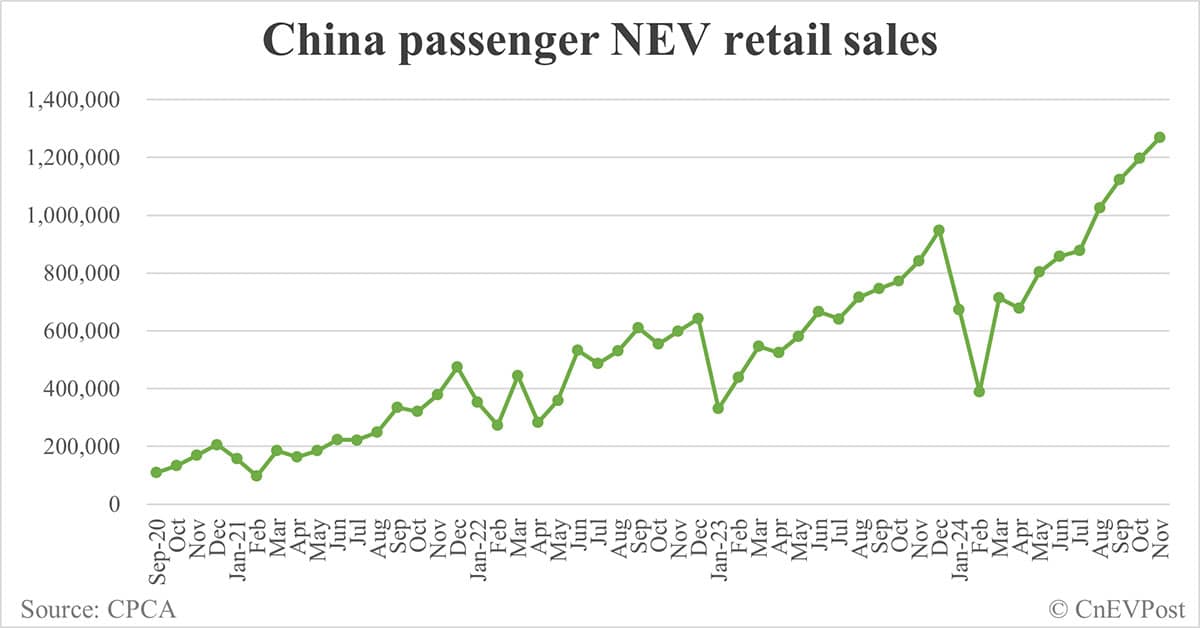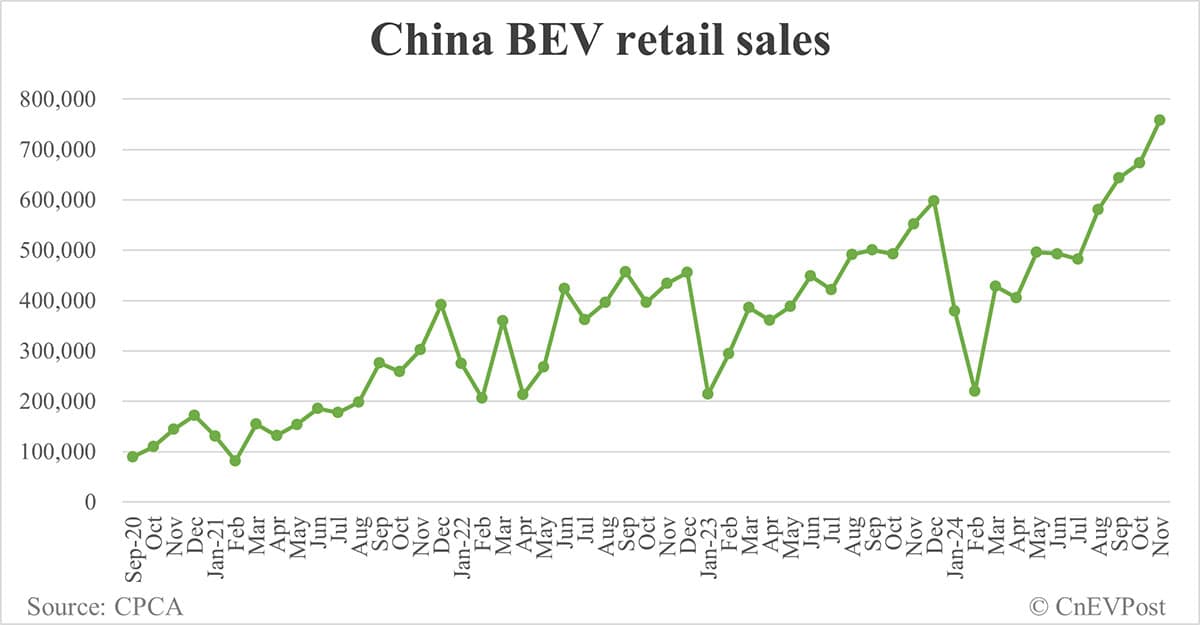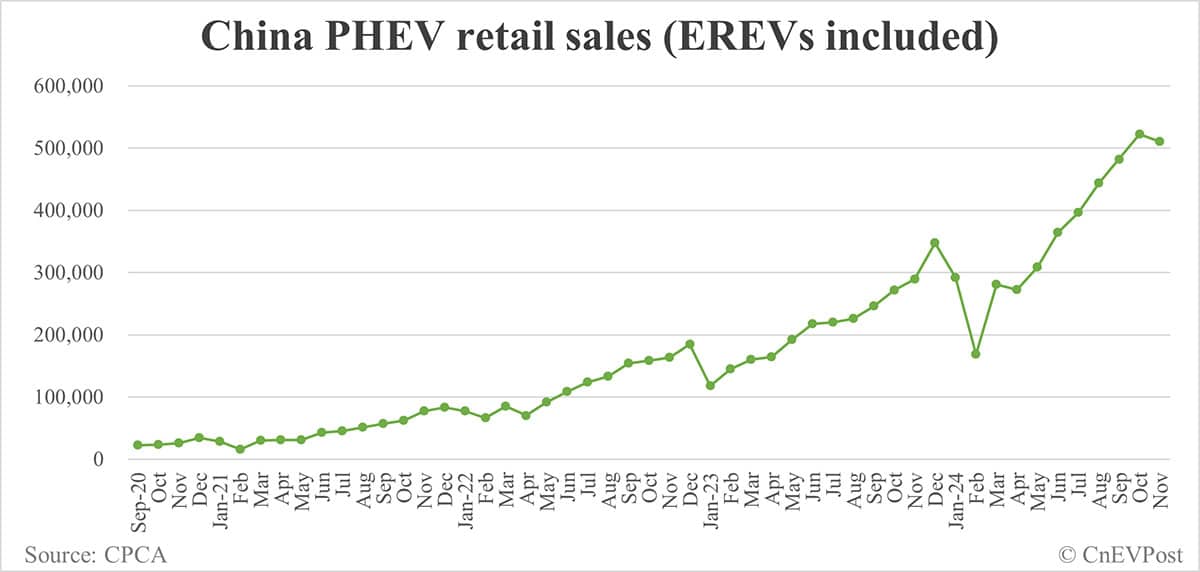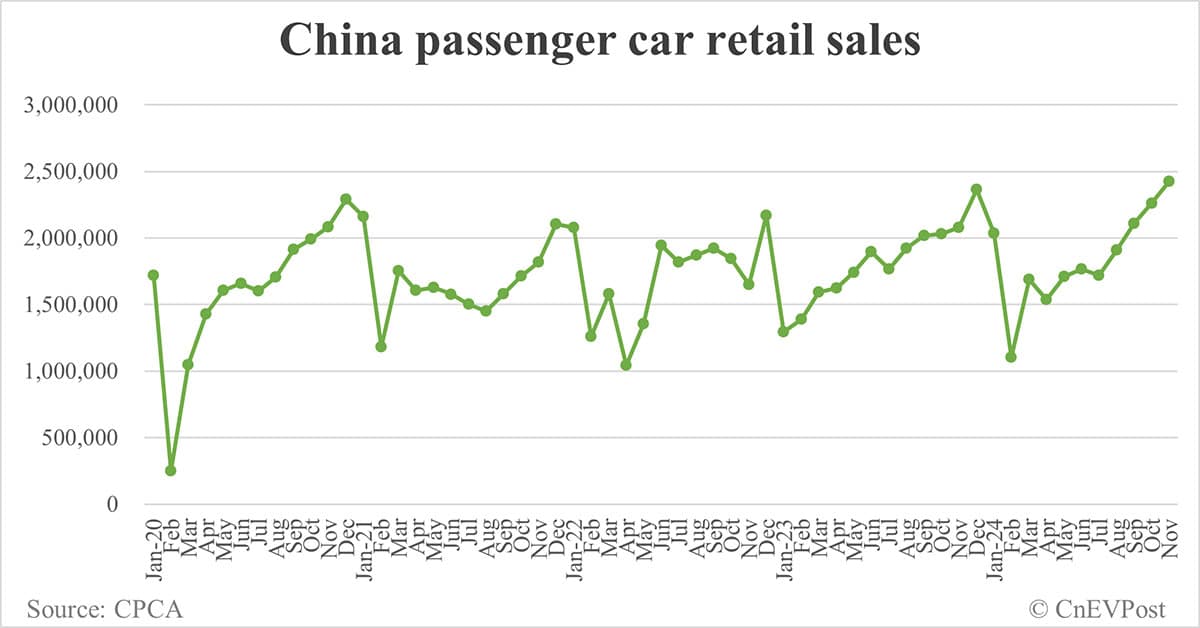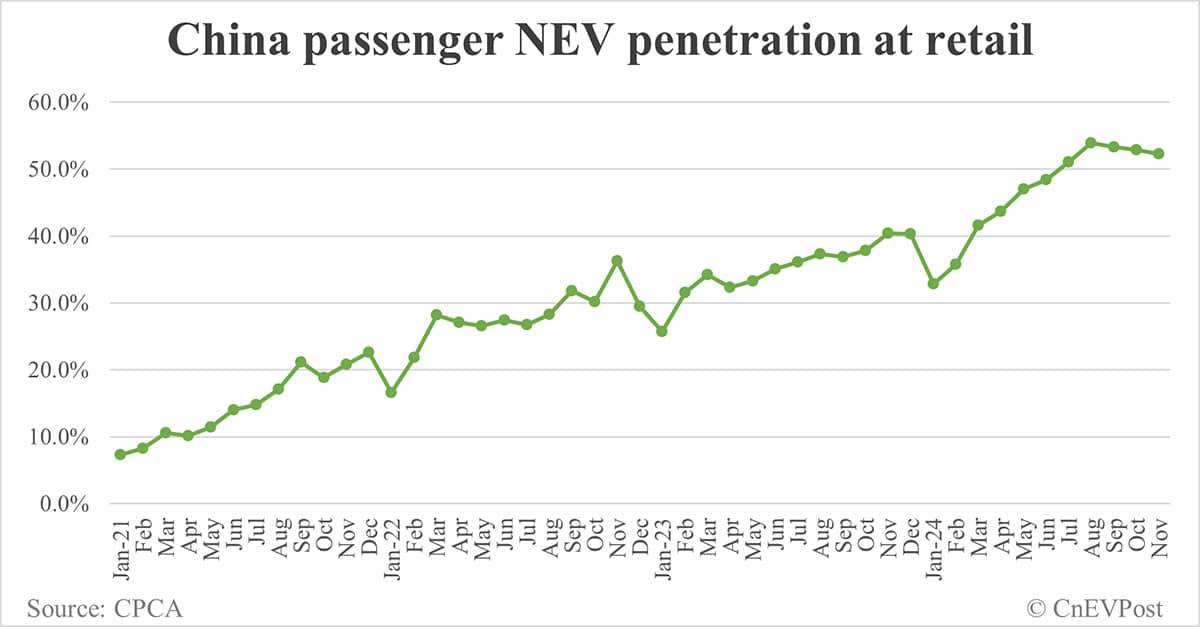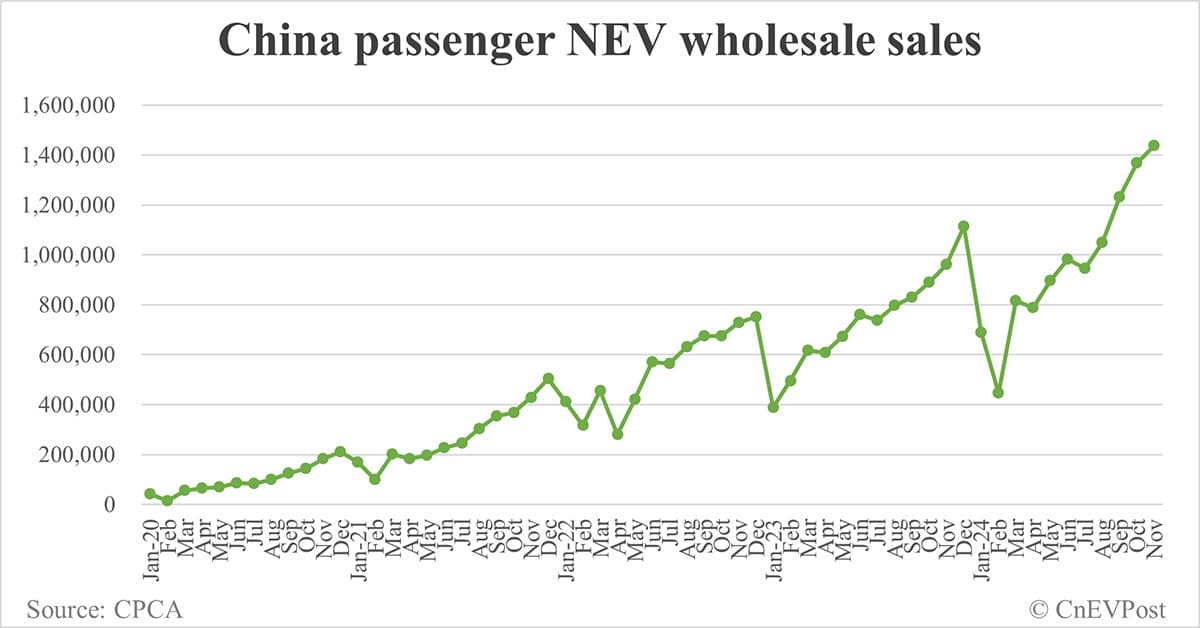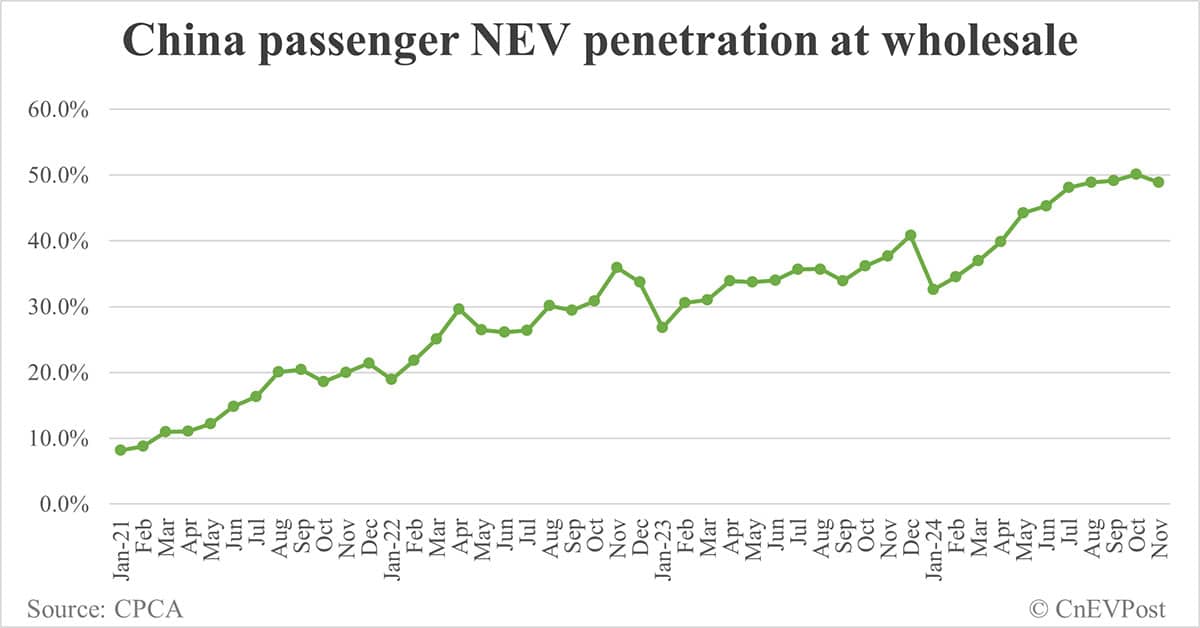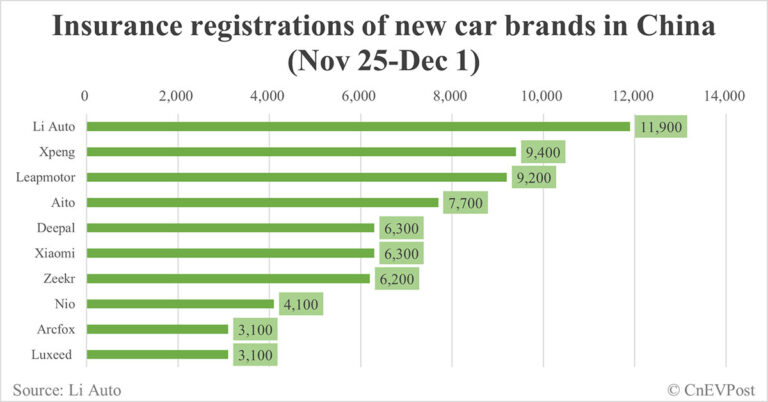Retail sales of NEVs in China exceeded 1 million for the fourth consecutive month in November, although penetration declined sequentially for the third time in a row.
Retail sales of new energy vehicles (NEVs) in China reached a new all-time record in November, but the contribution of these vehicles to passenger car sales declined further, as gasoline vehicle sales grew faster.
China's passenger NEVs sold 1.268 million units at retail in November, the fourth consecutive month of over 1 million, up 50.5 percent year-on-year and up 5.9 percent from October, according to the China Passenger Car Association (CPCA).
The figure was lower than the CPCA's preliminary figure of 1.277 million units released in early December, and also lower than its estimate of 1.28 million units released at the end of last month.
Battery electric vehicles (BEVs) had retail sales of 758,000 units in November, up 36.7 percent from a year earlier and up 4.9 percent from October.
BEVs contributed 59.8 percent of all NEV retail sales in November, up from 56.3 percent in October.
Plug-in hybrid electric vehicles (PHEVs), excluding extended-range electric vehicles (EREVs), contributed 30.7 percent of all NEV retail sales in November with retail sales of 389,000 units, up 92.3 percent year-on-year while down 4.9 percent from October.
Retail sales of EREVs were 121,000 units in November, contributing 9.5 percent of NEV retail sales, which was up 41.8 percent year-on-year and up 3.0 percent from October.
Combined retail sales of PHEVs and EREVs were 510,000 in November, up 76.5 percent year-on-year but down 2.3 percent from October. This is the first time since April that hybrids have seen a sequential decline in retail sales.
China's passenger cars including sedans, SUVs and MPVs retailed at 2,423,000 units in November, up 16.5 percent year-on-year and up 7.1 percent from October.
This means that the overall sequential growth rate of China's passenger car retail sales outpaced the growth rate of NEVs.
China's NEV penetration rate at retail stood at 52.3 percent in November, the fourth consecutive month above the 50 percent mark, but the third consecutive month of sequential decrease.
The penetration rate was 11.9 percentage points higher than the 40.4 percent recorded in the same month last year, but 0.6 percentage points lower than the 52.9 percent recorded in October.
The decline in penetration of NEVs at retail could be largely due to gasoline vehicle sales seeing faster growth rates, incentivized by the government's trade-in policy.
NEV penetration at retail in November was 73.2 percent for local brands, 32.9 percent for luxury brands and 6.8 percent for mainstream joint venter brands, according to CPCA.
China's wholesale sales of passenger NEVs reached a record 1.438 million units in November, up 49.6 percent year-on-year and up 4.9 percent from October.
NEV penetration on wholesale was 48.9 percent in November, back below 50 percent. In October, NEV penetration on wholesale exceeded 50 percent for the first time, reaching 50.1 percent.
The penetration of local Chinese NEVs in November was 64.7 percent at wholesale, compared to 34.7 percent for luxury brands and 5.8 percent for mainstream JV brands.
Passenger NEVs exported from China were 80,000 units in November, down 6.3 percent year-on-year and down 33.3 percent from October, contributing 20 percent of passenger car exports.
BEVs contributed 73 percent of November's NEV exports, with A0- and A00-class BEV exports accounting for 49 percent of NEV exports, according to the CPCA.

